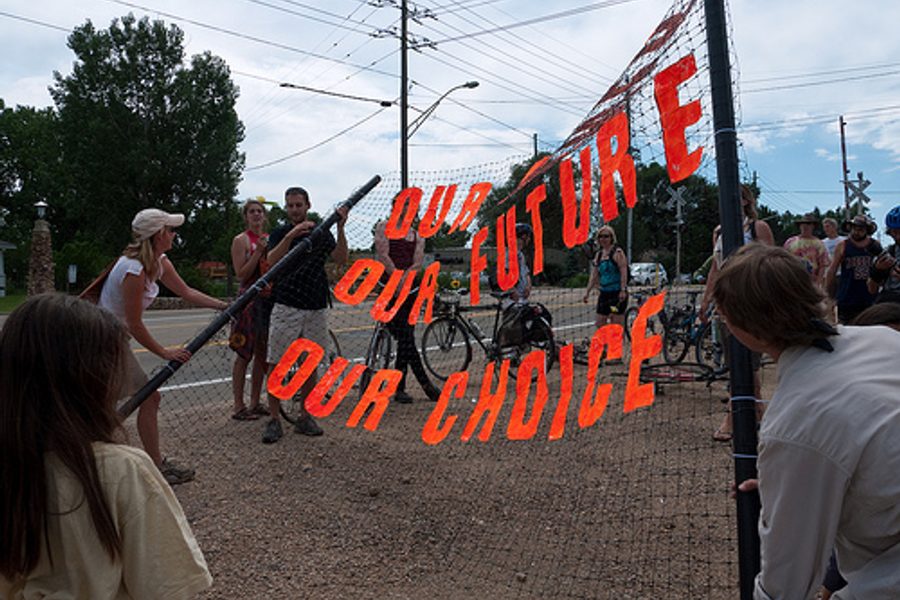
In recent years, politicos have been abuzz about demographic trends in Colorado that might yield a leftward political shift. And the state’s newly revamped election system, featuring expanded access to registration and a mail-in ballot for every voter, has certainly helped to boost voter turnout. So far, though, it’s been a mixed bag. Last week’s election, which included a number of local and state ballot initiatives, saw several progressive victories, as well as some setbacks: Coloradans decisively struck down a tax hike to fund public education but approved a hefty sales tax on their new recreational marijuana industry, while three cities passed fracking bans, and five northern counties voted to secede from the state.
But one city in particular deserves credit: In Boulder, residents voted overwhelmingly to move forward with their plan to create a publicly owned municipal utility — or “muni” — based on local, renewable sources.
As I reported earlier this fall, in 2011, citizens in Boulder voted to break away from their coal-based corporate electric utility, Xcel Energy, and begin exploring ways to form a public municipal utility based on renewable energy sources. Working groups found that a public muni could produce cleaner and cheaper electricity, so the city began to make moves to acquire Xcel’s distribution infrastructure — all the poles, wires and substations needed for a functional energy grid.
Here, opponents of clean energy apparently saw an opportunity to throw a wrench into the process. In May, Voters For Approval Of Debt Limits, a newly-created group with links to Xcel Energy, proposed Measure 310, a charter amendment which would have required voters to approve a specific debt limit before the Boulder could enter condemnation (the process by which a city uses eminent domain to negotiate a transaction in court). The problem is that the exact cost of acquiring Xcel’s assets can only be determined after condemnation has begun. The measure was thus designed to put the city in a legal Catch-22, effectively grinding all progress on the utility conversion to a halt.
In response, the City Council drew up Issue 2E, an alternative proposal to establish a $214-million debt limit — an amount that city appraisers had determined would be more than enough to cover acquisition costs, giving the city the flexibility it needs to move forward with condemnation early next year.
Leading up to the vote, Xcel contributed at least $500,000 to Voters For Approval of Debt Limits, whose ads pushed the message that a muni would cost taxpayers an untold amount of money.
Proponents of the muni, meanwhile, raised less than $350,000. But what they lacked in funding, they made up for with a grassroots army of fiercely dedicated volunteers. Instrumental in organizing the campaign against 310 was local nonprofit New Era Colorado, whose executive director, Steve Fenberg, estimates that their team had over 100,000 conversations with community members about what the vote meant for their city’s energy future. More than 500 volunteers gave their time to register voters, knock on doors, talk to their neighbors and call voters. They even rented a fleet of golf carts to offer voters a ride to polls. “We really left it all on the field for this campaign,” says Fenberg.
And it paid off. On Tuesday, the people of Boulder spoke loudly and decisively: Measure 310 was struck down, and Issue 2E passed by a resounding 2:1 margin.
In a lot of ways, Boulder is still exactly where it was before the election. The city’s appraisers are still trying to estimate acquisition costs before the city enters condemnation early next year. If anything, the tangible result of the vote is leverage: The city, having been given a vote of confidence, is now emboldened as it proceeds in negotiations. But, more than anything, the landslide vote shows that when it comes to energy policy, people are sick and tired of working within the confines of what the fossil fuel industry tells them is possible. And with similar municipalization movements already springing up across the country, Boulder may serve as a blueprint for the kind of bottom-up energy revolution that we so desperately need.



